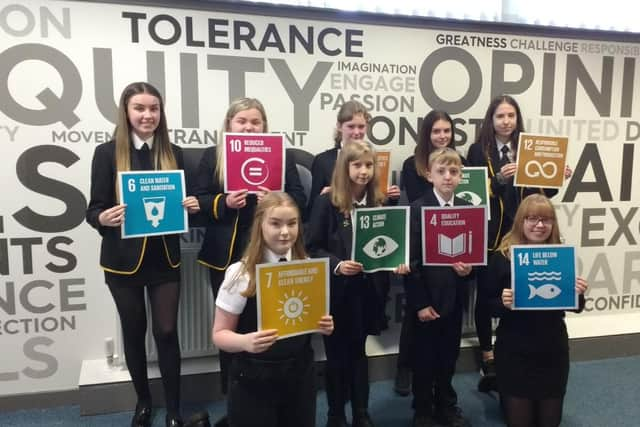Helping young people take action on climate change - Catherine Gee
And it is a bitter pill to swallow to think that many of the consequences of a changing and warming climate were known and understood in depth half a century ago.
In the 1980s we learnt in school about "sustainability”, “deforestation” and “global warming”. But strangely, although we listened in class, I don’t think we really heard or understood what to do about it. The consequences of our actions then seemed too far removed from our lives at that time. And we certainly didn’t get taught about what our individual role was to help fix things – young people didn’t really have a voice.
Advertisement
Hide AdAdvertisement
Hide AdToday, the twin crises of climate change and biodiversity loss are seen as the greatest threat humanity has ever faced. Thankfully, what has changed since the days when I was a pupil, is both our understanding of the issues and the sense of urgency we feel about addressing them. It is accelerating rapidly. The appetite for more information from young people, and educators alike, has grown exponentially. Likewise, the depth of understanding of the consequences of inaction is growing as we start to live through the result of our historic inaction. More voices are being heard.


Over the past 25 years we have supported educators and young people in every local authority area across Scotland through Eco-Schools, with many of them proudly flying the Green Flag to share and celebrate their achievements.
In addition, over the past five years our Climate Ready Classrooms in secondary schools have empowered and enabled positive change – creating carbon literate learners and educators who are better informed to take action and progress climate change education.
We know that many educators, young people and children are already doing amazing work across our schools and do wonderful things on a daily basis to plant for nature and biodiversity, cut energy consumption, reduce water usage, tackle litter and reduce waste. Each action helps to combat climate change.
But we also know that our young people and educators are asking for more help. They want to know the facts, the challenges ahead and the links between what they are doing and how it tackles the twin climate and nature crises.
With the adoption of The Glasgow Climate Pact at COP26, we believe that the time to reframe the support we provide is now.
As a country we are working towards becoming a Net Zero nation by 2045 and have set an entitlement to Learning for Sustainability for every learner. Those children and educators at school now will be the ones to help us achieve this ambition. But to do that they need the right tools and information – which is why we’ve launched Climate Action Schools.
Our Climate Action Schools framework will build on our existing activity and increase opportunity for learning across five core components: learning for sustainability; climate emergency; biodiversity; litter and pollution; and amplifying pupil voices.
Advertisement
Hide AdAdvertisement
Hide AdWe believe that a network for sharing national action is needed and the Climate Actions Schools framework will support those in the sector – ensuring that educators feel equipped to quench the thirst of our young people for information on how to combat climate change and how to be heard.
As we bring our Climate Action Schools work to the fore of what we do, we will run our second Climate Action Week for Schools in September, launching new resources, live lessons every day with key speakers and opportunities for pledging action and how to get more involved.
My call to you now is to pledge to join the Climate Action Schools network, through your existing work with us, or in a new way. Help us to support our children and young people to understand the climate emergency and nature crisis and the actions they can take to help our country reach Net Zero by 2045 now. Find out more at www.keepscotlandbeautiful.org
Catherine Gee, Deputy Chief Executive, Keep Scotland Beautiful
Comments
Want to join the conversation? Please or to comment on this article.